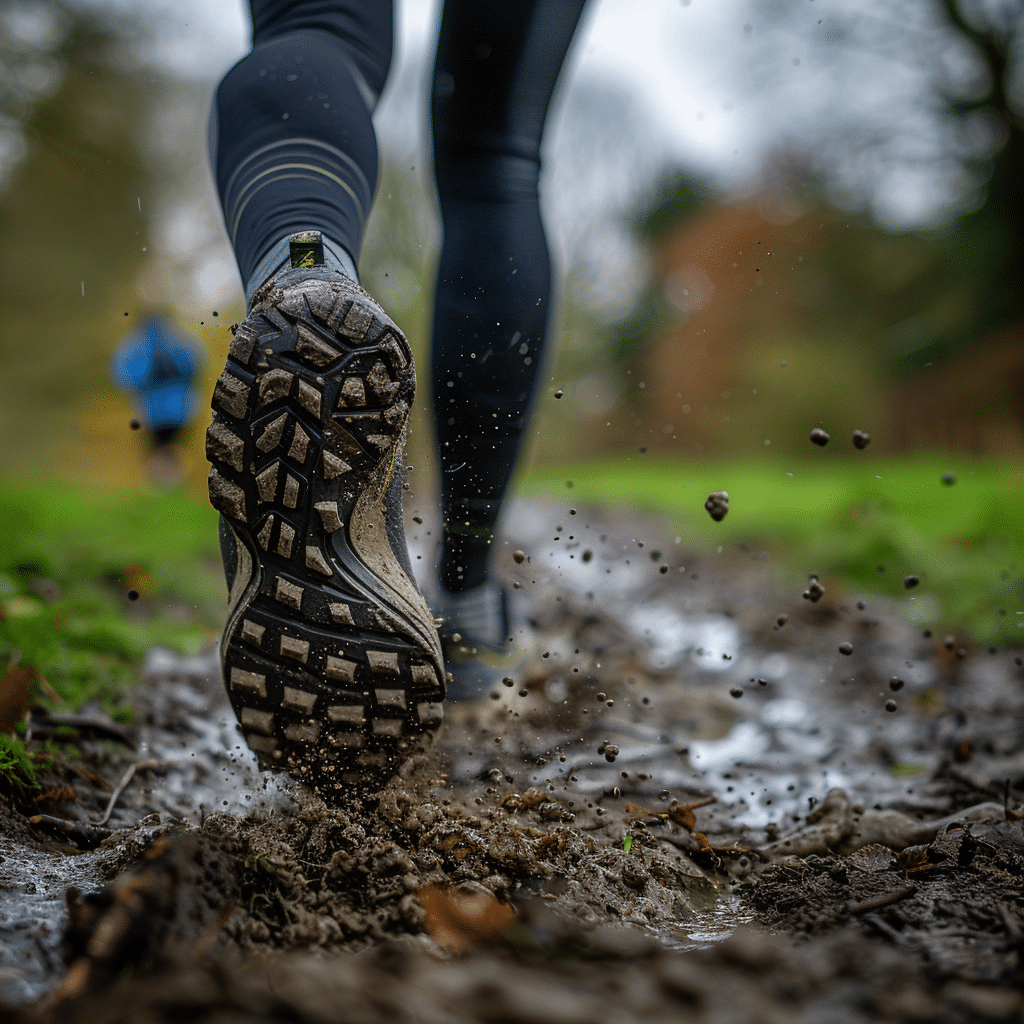Are you ready to elevate your fitness game by stepping off the tarmac and onto the trails? If so, trail running awaits you! It offers a unique blend of challenging workouts and scenic natural beauty to satisfy both your fitness needs and your desire to just get away from it all. Regardless of your experience level, trail running is awesome. This comprehensive guide will provide you with all the tools and tips you need to fully experience nature while getting in a great workout.
From the must-have gear and appropriate attire to endurance-building exercises and injury-prevention tactics, this guide has you covered. We also delve into expert techniques for traversing a whole host of terrains.
I offer insights into the physical and mental health benefits that trail running provides. Things such as enhanced cardiovascular fitness and lower stress levels. and will even delve into why trail running could offer a more fulfilling, rewarding, and immersive experience than traditional tarmac pounding.
Path Less Paved
Trail running is an adventurous sport that helps runners to explore the beauty of natural landscapes while getting in a fantastic workout. Rather than the flat, predictable, boring surfaces of city roads, trail running is known for its rugged and ever-changing terrain amidst forests, mountain ranges, or other beautiful outdoor settings. Unlike its urban counterpart, trail running provides a dynamic workout. It is far more challenging thanks to its uneven dirt paths, rocky inclines, and natural obstacles.
But, running trails does more than just condition the body. It engages the mind because it requires constant attention and adapting to new topographies. As a result, trail running becomes a mental adventure too.
It offers a holistic environment where mental clarity and physical output meet. All while surrounded by the quiet charm of the wilderness. As you pace through dense woodlands, crest mountain peaks, or jog the banks of rivers, trail running is unlike any other exercise. The experience is not just about covering distance but building yourself up while discovering a deeper connection to the world around you.
Benefits of Trail Running
Trail running offers a ton of benefits for both your physical and mental health. Here are just a few reasons why you should lace up your running shoes and hit the trails:
- Improved cardiovascular health: Trail running involves running on varied terrain, including inclines and declines, which challenges your cardiovascular system in different ways compared to road running. The uneven surfaces and obstacles force your body to work harder, resulting in increased cardiovascular fitness.
- Strengthened muscles: The uneven terrain of trails engages a wider range of muscles compared to road running. Your core, glutes, and stabilizing muscles have to constantly adapt to changes in terrain, leading to improved overall strength and stability.
- Reduced impact on joints: Compared to running on concrete or asphalt, trail running provides a softer surface. Dirt reduces the impact on your joints and provides a cushioning effect. This can help prevent injuries and reduce the risk of developing joint-related issues.
- Enhanced mental well-being: Running some trails not only provides physical benefits but also offers a powerful boost to your mental health. Spending time in nature has been shown, many times, to reduce stress levels, improve mood, and increase overall well-being. The combination of physical activity and natural surroundings can have a profound impact on your mental state.
- Sense of adventure: Trail running allows you to explore new and exciting environments. It adds an element of adventure to your fitness routine. The sense of exploration and discovery can reignite your passion for running and keep you motivated to continue your fitness journey.
- Weight Management: The uneven surfaces and constantly varied terrain can burn more calories than road running, assisting in weight loss and maintenance.
Essential Gear for Trail Running
To fully enjoy the trail running experience and stay safe while out there, it’s important to have the right gear. Here are some essential items you should consider:
- Trail running shoes: Invest in a good pair of trail running shoes that provide adequate traction, stability, and protection. Look for shoes with lugged soles, toe protection, and a sturdy construction. This will help you avoid ankle injuries and handle the uneven terrain while protecting your feet from rocks and roots. Personally, I love Salomon trail runners.
- Weather-Appropriate Gear: Check the weather before you head out. Opt for lightweight and breathable clothing that wicks away sweat and keeps you dry during your runs on hot days, and layered clothing for cooler days. Stay comfortable, warm enough, but not too warm.
- Hydration pack or water bottle: Staying hydrated is crucial during trail runs. You need to bring some if you will be in remote areas where water sources may be limited. Consider carrying a hydration pack or a handheld water bottle to ensure you have access to water throughout your run.
- Nutrition: Bring along energy bars, gels, or snacks to maintain energy levels on longer runs.
- Navigation tools: If you’re exploring unfamiliar trails, it’s essential to have navigation tools. A trail map, compass, or GPS device are awesome. These tools will help you stay on track and prevent you from getting lost in the wilderness.
- Sun protection: Protect your skin and eyes from the sun’s harmful rays by wearing sunscreen, a hat, and sunglasses. Choose a broad-spectrum sunscreen with a high SPF and apply it generously before heading out on the trails. Just avoid any of the terrible brands that could cause more harm than good.
- Headlamp or Flashlight: If you might be out near dusk or dawn, a light source is essential for seeing the trail and being visible to others.
- Personal Identification and Cash: Always carry ID, a safety contact card, and some cash or a credit card for emergencies.
- Safety and First Aid: Generally, you should be alright if you are in high trafficked areas. But if you head out into more remote areas or places you are unfamiliar with consider packing a basic first aid kit, a whistle for emergencies, and know the area’s wildlife and plant safety.
Remember, the right gear can make all the difference in your trail running experience. Invest in quality items that are specifically designed for trail running to ensure your comfort, safety, and enjoyment on the trails.
Finding the Right Trails for Your Running Adventure
The thrill of trail running often lies in uncovering new and amazing trails that are safe enough to run but also challenging enough to keep you engaged. With so many options available, finding your next runner’s paradise might feel overwhelming. Here are a few guidelines to streamline your search:
Research Local Trails
Kickstart your hunt by exploring your local area. Leverage the power of dedicated websites, guidebooks, or trail-focused mobile applications, like AllTrails, that offer key details about different trails, including difficulty level, scenic attributes, and particular features.
Online forums or social media groups dedicated to trail running can also be treasure troves of insights and personal trail recommendations from seasoned runners.
Once you’ve curated a list of potential running routes, pore over reviews or seek advice to fine-tune your selection.
Need some help?
Shape Success, Live Exceptionally
Hit that button, and get started today.
Align Trails with Your Fitness Level and Objectives
To select the right trail for you, think about your current fitness level and running goals.
For novices, trails rated less challenging and offering shorter lengths are excellent starting points to build endurance and resilience gradually. More skilled runners want to look for trails offering steep inclines, technical topography, or longer distances to test their capabilities.
Always keep in mind that the landscape’s nature and the route’s elevation gain can dramatically influence your trail experience. Running flat lands in Oklahoma are far different than running trails in the mountains of Killington Vermont, which are far different than running through the Pacific Northwest rain forest. So, tailor your choices accordingly.
Prioritize Safety
Never compromise safety during any workout, nonetheless trail runs. Before setting off, assess the weather forecast and current trail conditions. Dress suitably and pack indispensable items such as a map, compass, first aid kit, and ample water and nourishment for your run. Always inform someone about your intended route and estimated return time. This is doubly vital if you’re venturing out solo. Equip yourself with knowledge about the local wildlife or any possible risks in the area, and ensure you’re prepared to respond effectively in emergencies.
The ‘perfect trail’ is subjective and entirely dependent on your fitness capacity, your goals, and the experiences you seek.
Trail Running for Beginners
For those new to the world of trail running, starting with a thoughtful approach and the mentality to embrace gradual progress is crucial. Here’s a guide designed to help beginners venture into trail running safely and effectively:
Start with Shorter Distances
As a beginner, it’s important to start with shorter distances and gradually increase your mileage. Trail running requires different muscles and engages
Beginning with shorter distances is important for trail running beginners. The diverse terrain calls upon a variety of muscles, particularly those responsible for stabilizing your movements. Allow your body the necessary time to adapt by starting with 2-3 mile runs, gradually building up your mileage as your comfort and confidence on the trails grow.
This is more important than you think. Those muscles you forget exist will remind you of their existence if you overdo it.
Focus on Technique and Form
Success in trail running is deeply intertwined with mastering the art of traversing varied landscapes filled with rocks, roots, and abrupt elevations.
To reduce the risk of injury and enhance your running effectiveness, concentrate on refining your running technique. Keep your eyes trained ahead to spot upcoming hurdles, engage your core, and lean forward faintly.
Boost your equilibrium and minimize the chances of stumbling by adopting a compact stride and quicker steps and utilize your arms for added balance and propulsion.
Build Strength and Endurance
A vital part of trail running is the blend of strength and endurance. Bolster your fitness regimen with strength training sessions to really develop leg and core muscle groups. This will contribute heavily to your stability on rugged paths.
To build a well-rounded physical condition, complement your training with alternative exercises. Things like biking, swimming, or even hiking enhance cardiovascular health and help you avoid repetitive strain injuries.
In short, do more than just run if you want to run better.
Embrace the Outdoors
We all come from people who lived in nature and people survived for thousands of years ‘out there’. Sadly, we have all become far more disconnected from our environment than is healthy. Trail running offers a unique avenue to build a deeper connection to the environment.
Allow yourself to become enveloped in the views, sounds, and the purity of fresh air deep in the forest, on the mountain top, or out on the plateau. Leaving your earbuds at home isn’t just for safety. It will let your senses bask in the natural serenity of your surroundings.
By being present in the moment, you not only grow the joy of being outside, but also build a sense of inner peace and revitalization.
Trail Running Races and Events
Once you’ve gained a level of familiarity and self-assurance with trail running, you might decide to venture into races or events. These trail runs bring experiences that can intensify your passion for the sport. Here’s your go-to guide about trail running competitions:
Choose the Right Race
Trail running races span a broad spectrum of distances and challenge levels, making it crucial to opt for one aligning with your capabilities and aspirations. If you’re a novice, try shorter races like the 5K or 10K to sample the race ambiance and build on your experience. Even if you can go further, depending on the terrain you may want to stay at the shorter end. As you refine your trail running skills over time, aim for more ambitious races like a half marathon or even dare to tackle an ultramarathon.
There are purely trail run events and obstacle races that are conducting on or off trail. Ultramarathons, for example, are incredibly long but are purely running based races. Spartan races or Tough Mudders are entirely different beasts that, while shorter, may have much larger elevation gains and include obstacles to overcome.
The sky is the limit, so you really just need to find something in line with your capabilities.
Train Specifically for Trail Races
Prepping for a trail race extends beyond conventional road or track running. Your training regime should mimic the distinctive hurdles associated with trail running. Implement trail-specific workouts into your training, such as hill sprints, technical trail runs, or extended runs on terrains mirroring your race conditions.
Additionally, invest time in acclimating to downhill running. It’s as taxing, if not more, than uphill running and requires honed techniques to master. Plus, once you are tired downhill is dangerous. Make sure you work on that.
Enjoy the Race Experience
Trail running races are a refreshing counter to conventional road races. Generally, they are more relaxed and have a far more supportive group of participants.
Now, that isn’t to say that road runners are not supportive but go run a trail race. You will see what I am saying.
Take some time to take in the landscapes, cheer for other runners, and soak in the solidarity characteristic of the trail running fraternity.
Everyone wants to win, but trail running is about loving every step of the journey, soaking in the surroundings, and cherishing the collective spirit while building a ton of confidence and learning about your own capabilities.
Wrapping Up
Get lost in the mesmerizing world around us with trail running. It is a unique mashup of fitness, self-challenge, and deep appreciation of nature’s allure.
Being properly equipped with the essential gear, training appropriately, and nurturing an adventurous spirit lays the groundwork for some pretty awesome runs through diverse trails and terrains.
Tighten your laces, find that trail, and take off. I hope this article helped push you towards one of my favorite activities.
Let Us Help You Out
I want to help you achieve better physical and mental health through exercise. Check out the plans I offer to my clients and see if you could benefit from working with me. If you have questions, you can always contact me through the Contact Us page.
Health coaches, like myself, can help guide you on your pathway towards reaching your overall health and wellness goals, whether that is getting bigger, stronger, faster, more lean, or just generally feeling better physically or mentally.
If you choose to join one of my programs we will work together to help you uncover motivations and roadblocks, improve your overall health and wellness, and get you on a path to being excellent in all that you do through higher levels of overall fitness
The only thing you need is some motivation and a willingness to change some old habits.
Get into contact with me to find out what, if any, membership is right for you.



